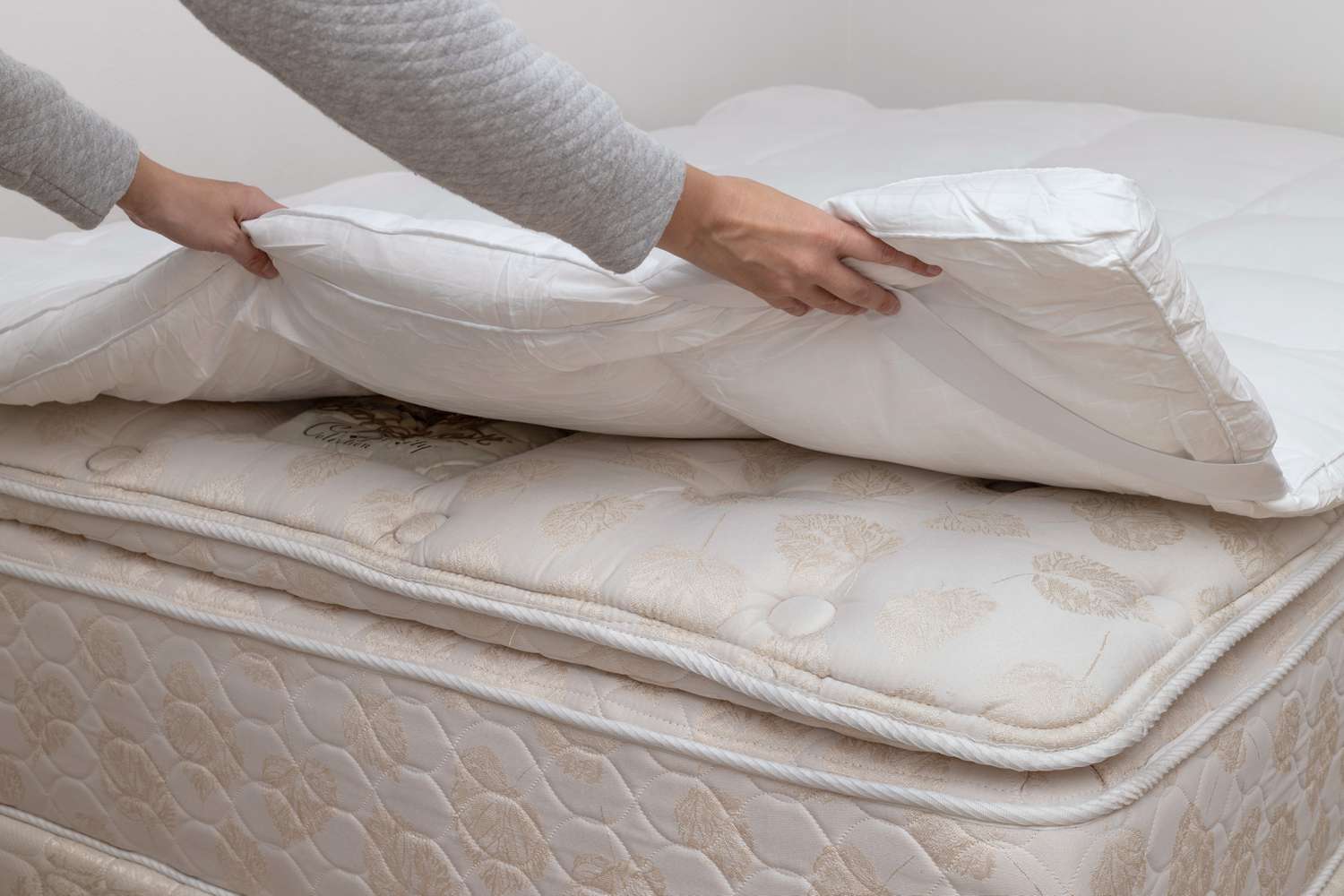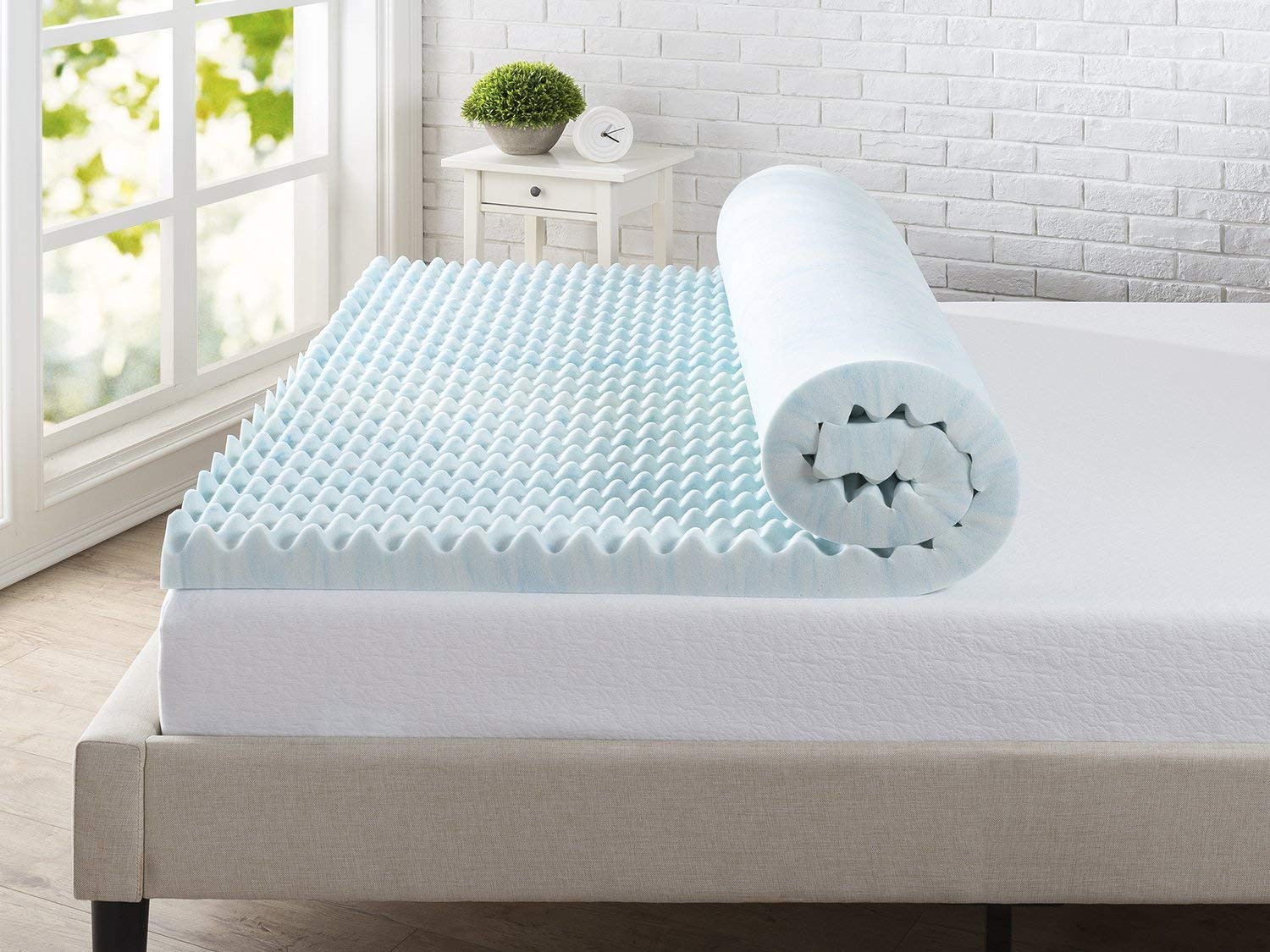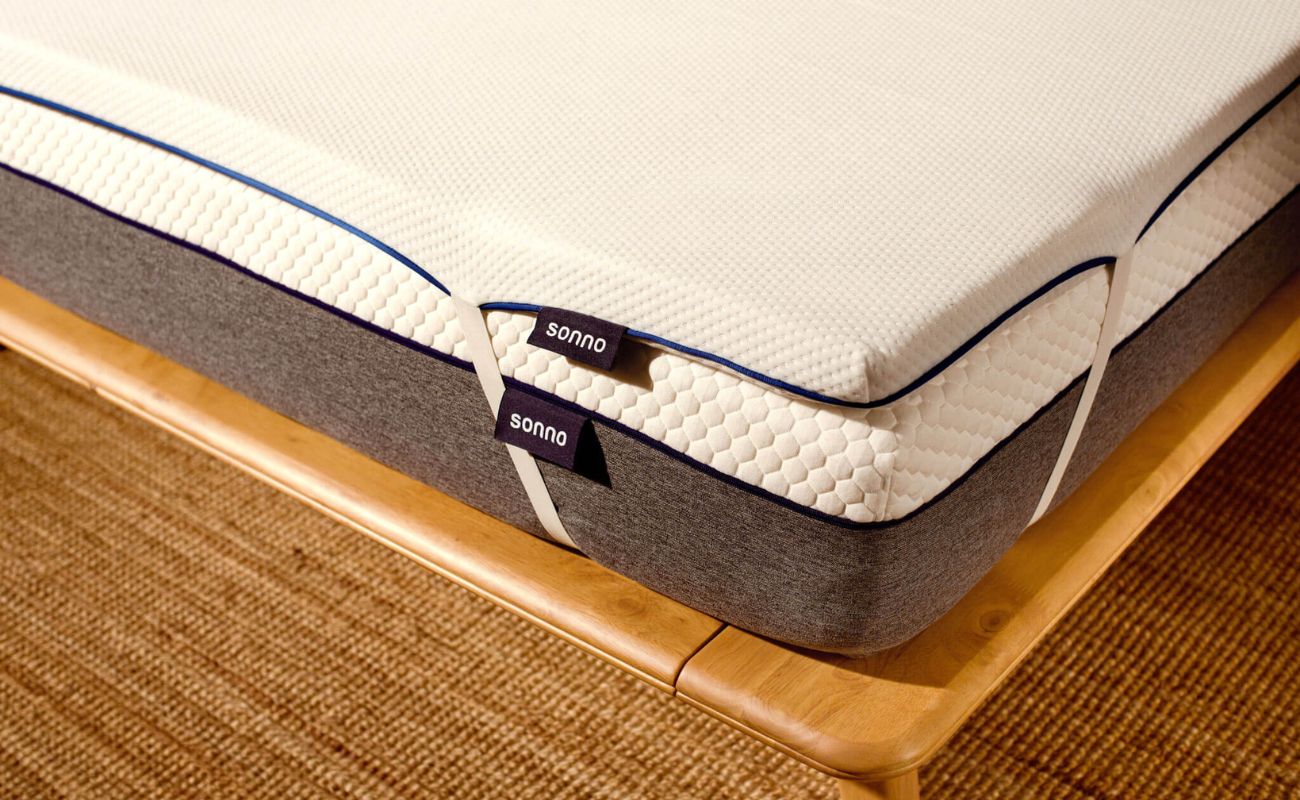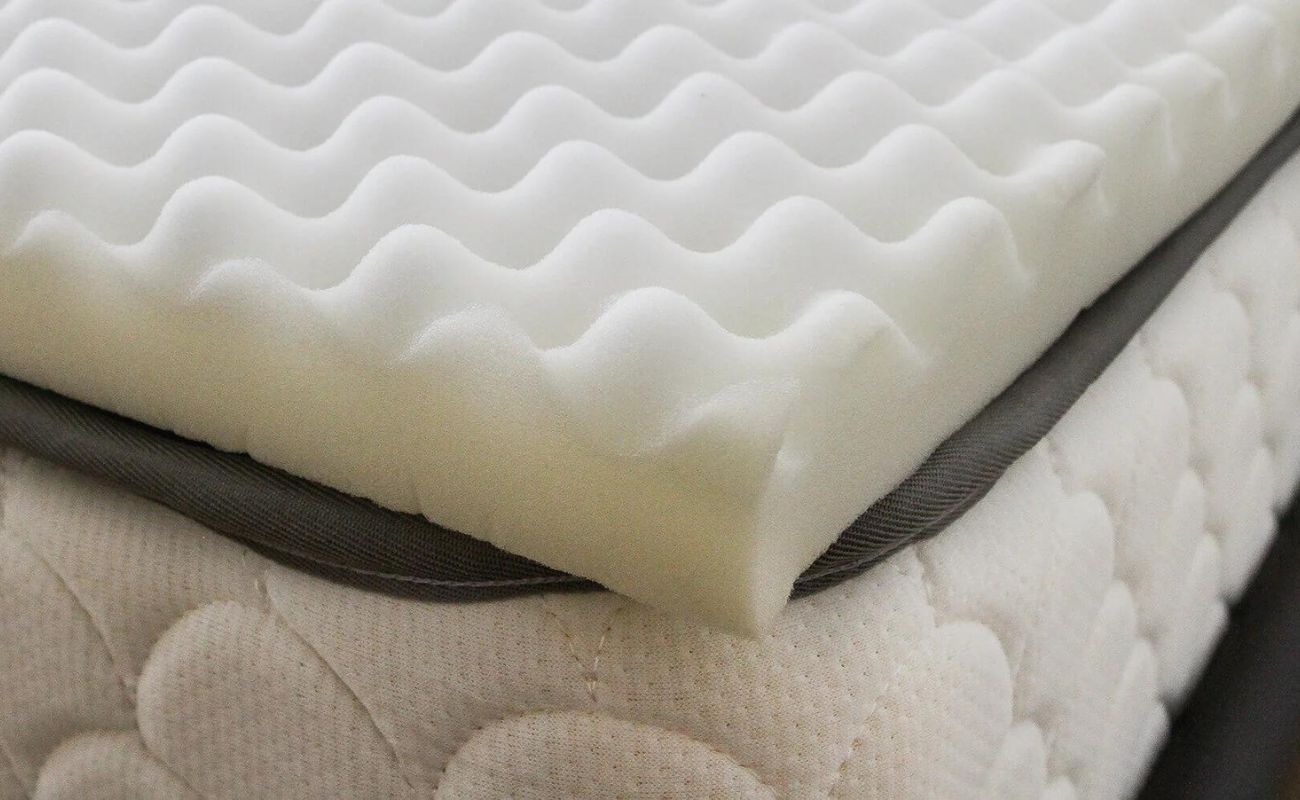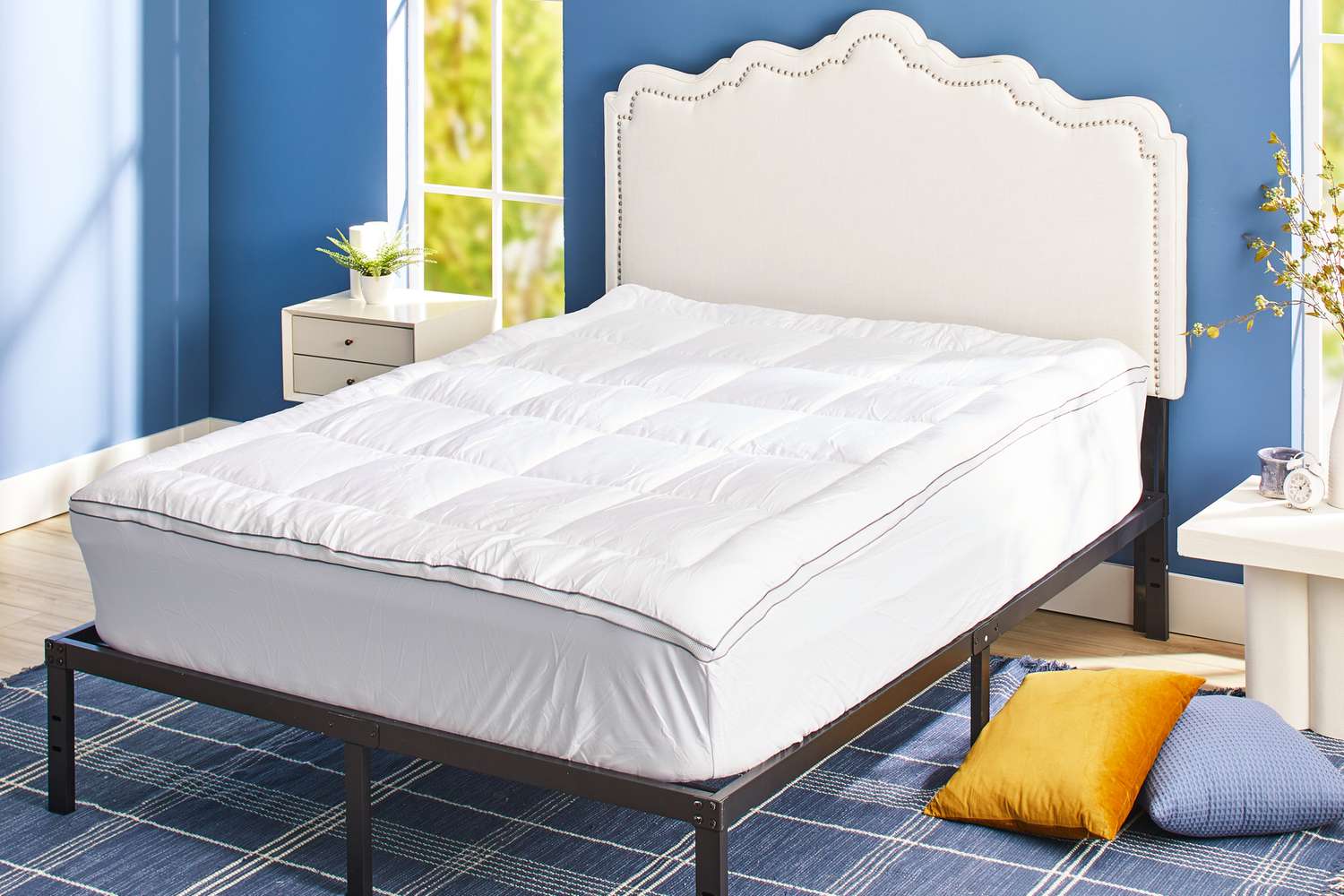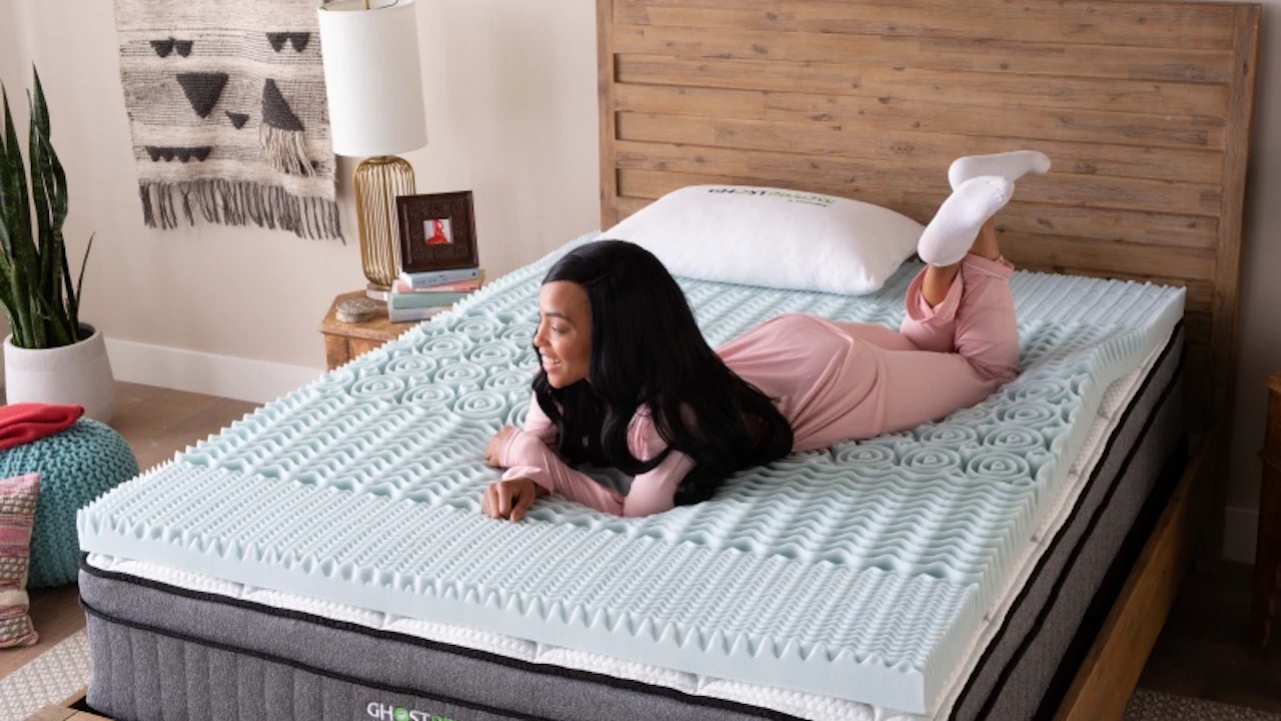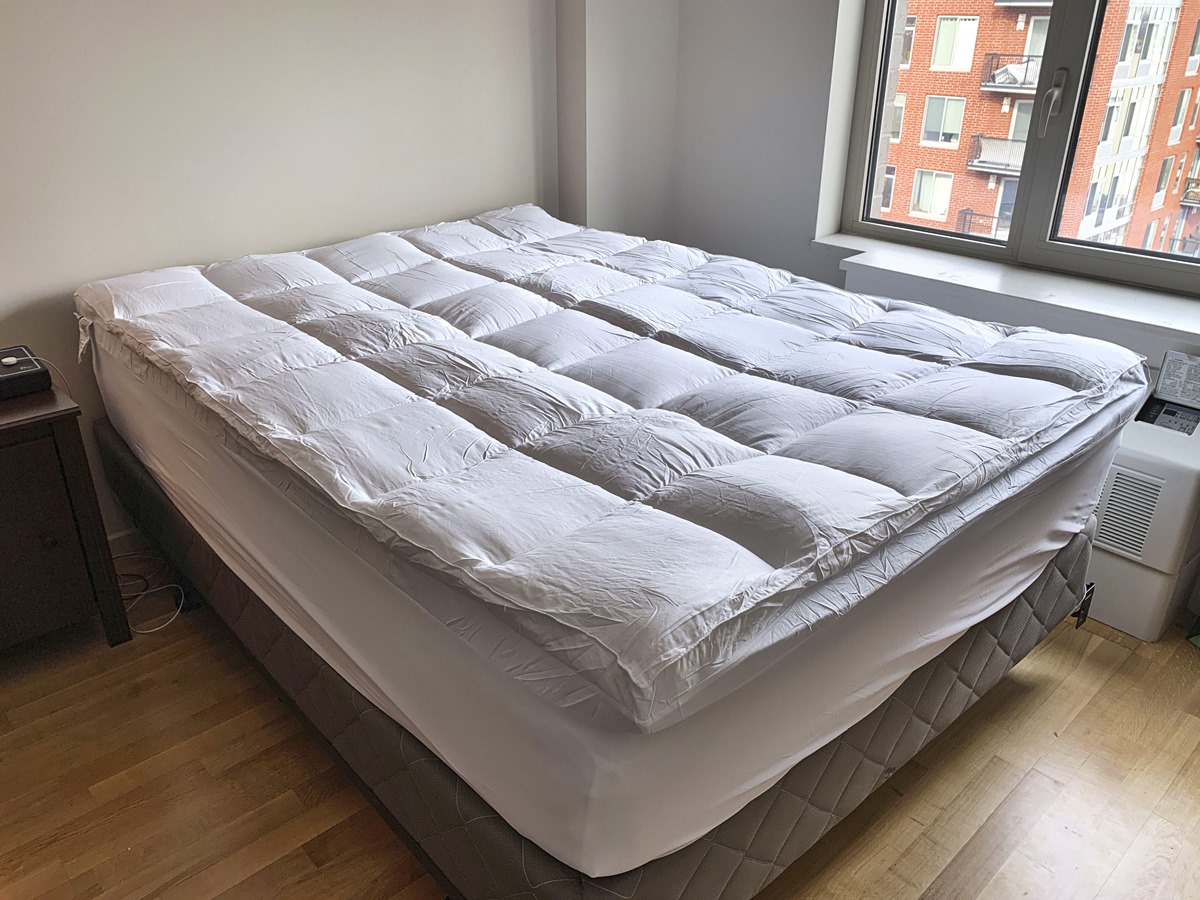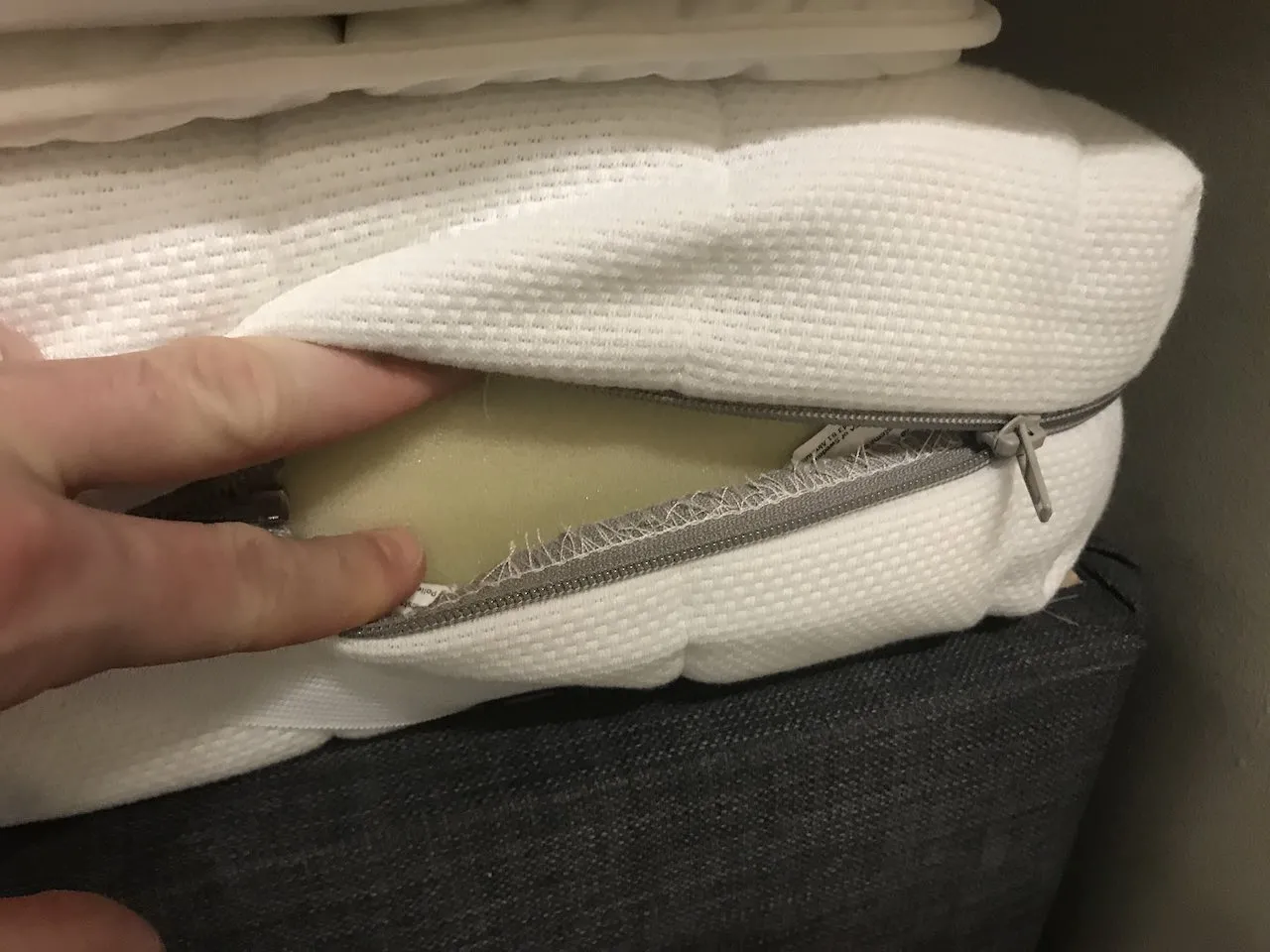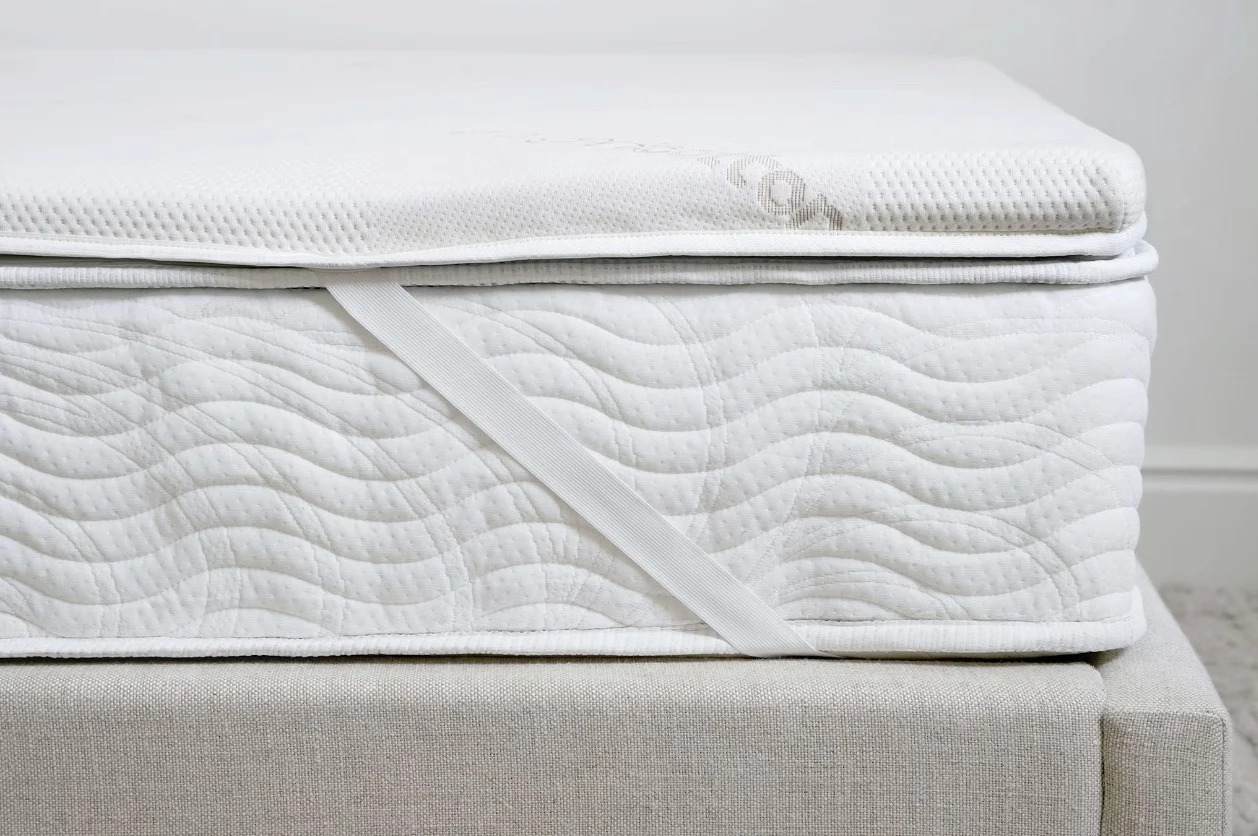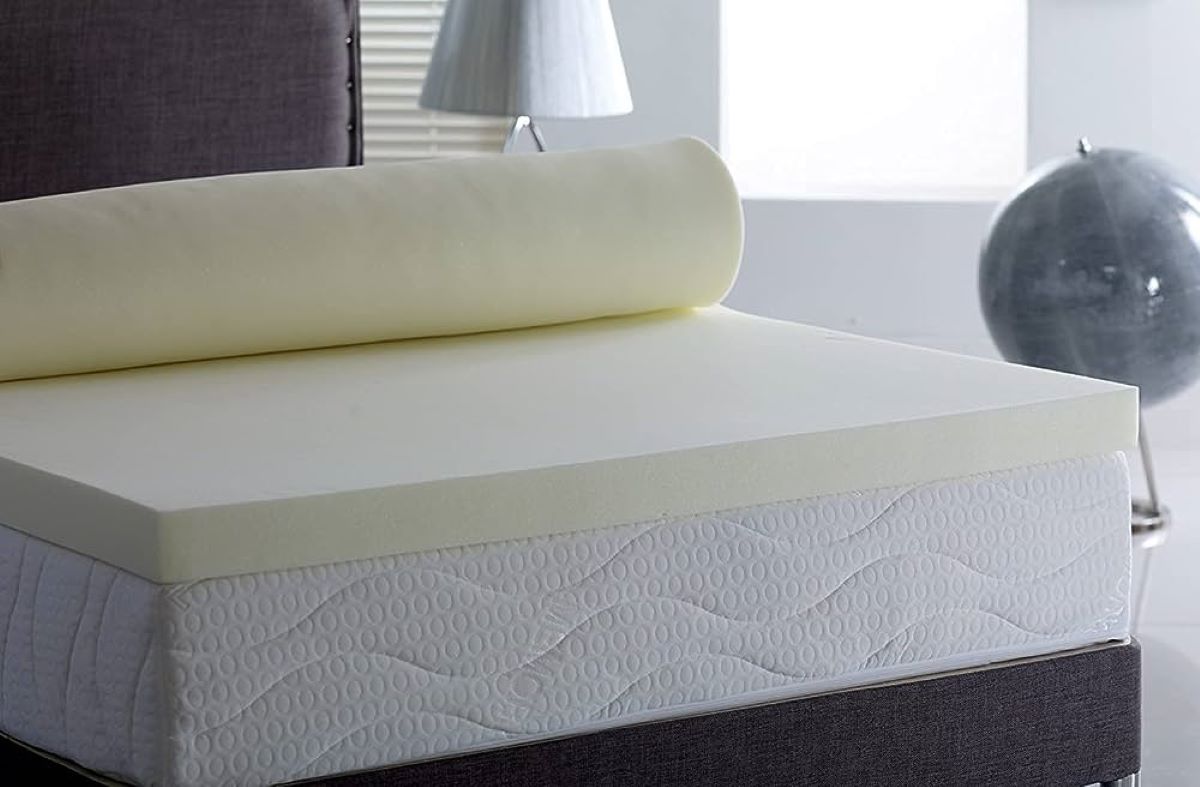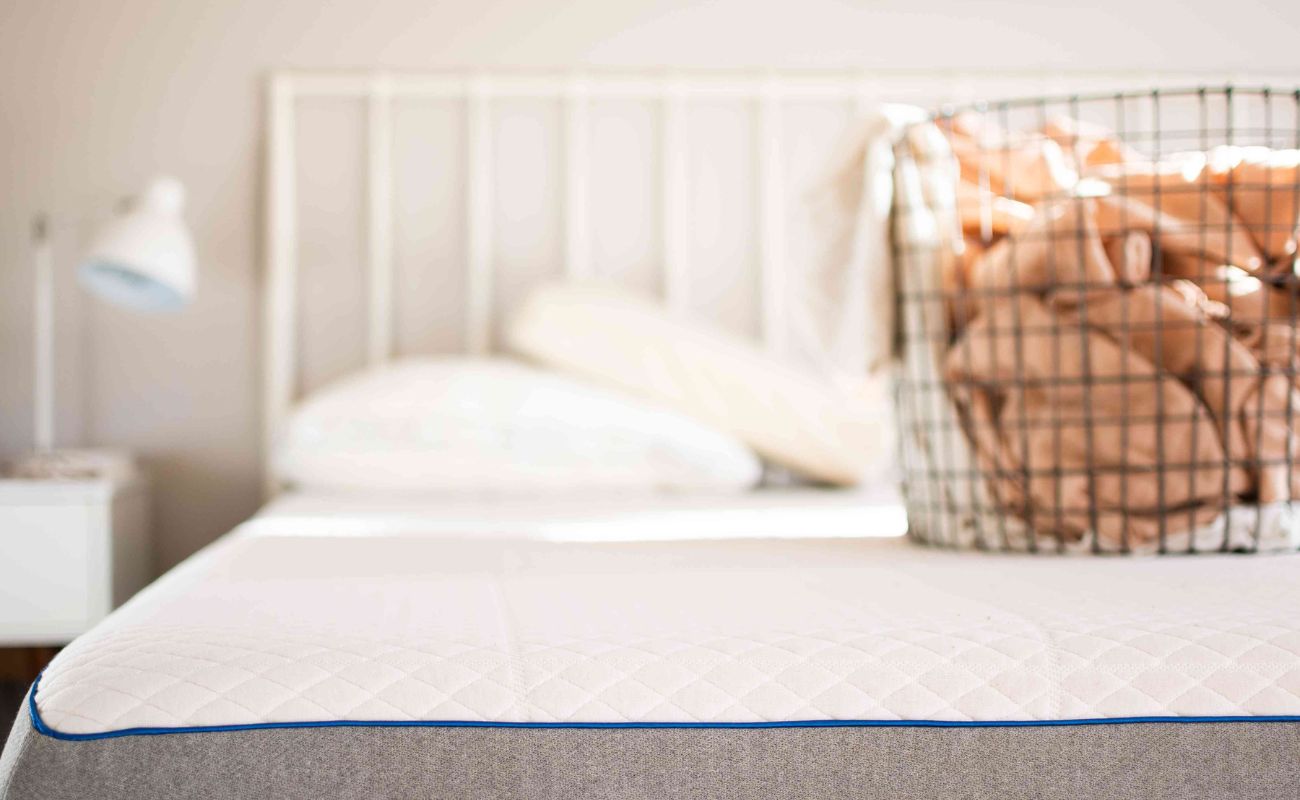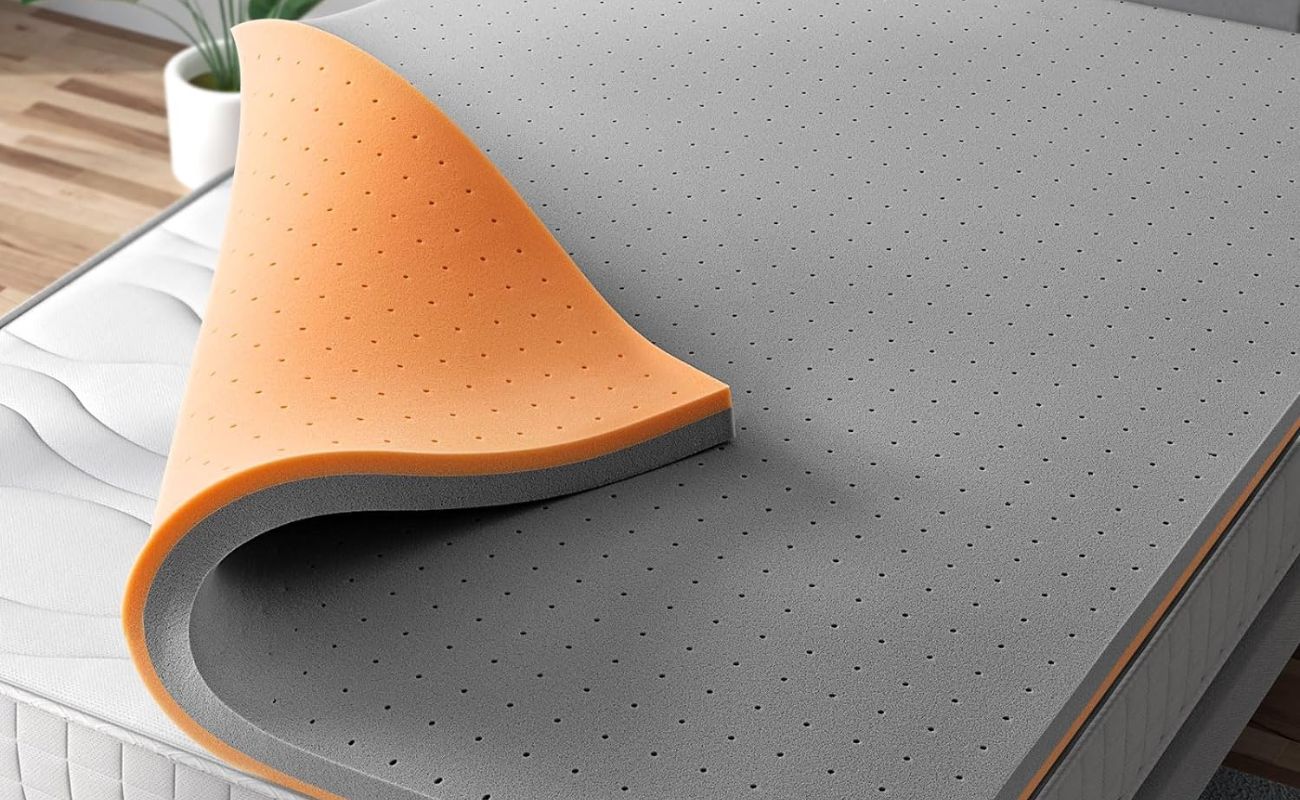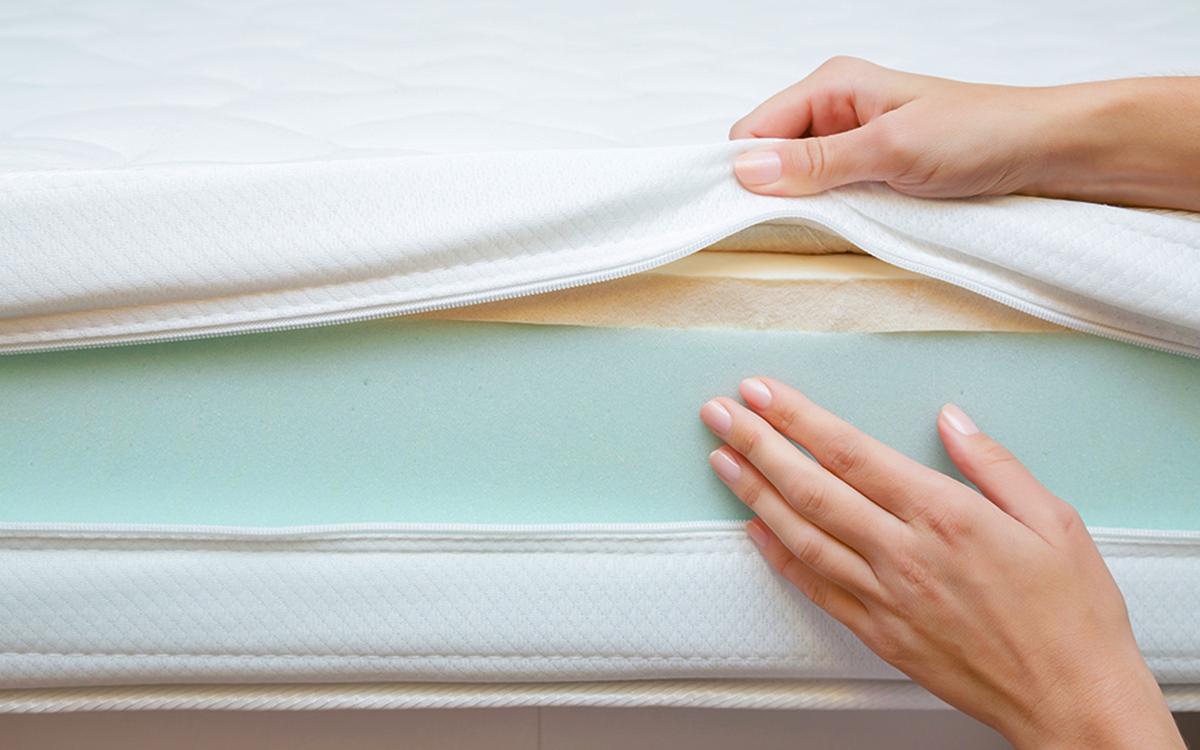Home>Furniture>Bedroom Furniture>How Often To Replace Mattress Topper
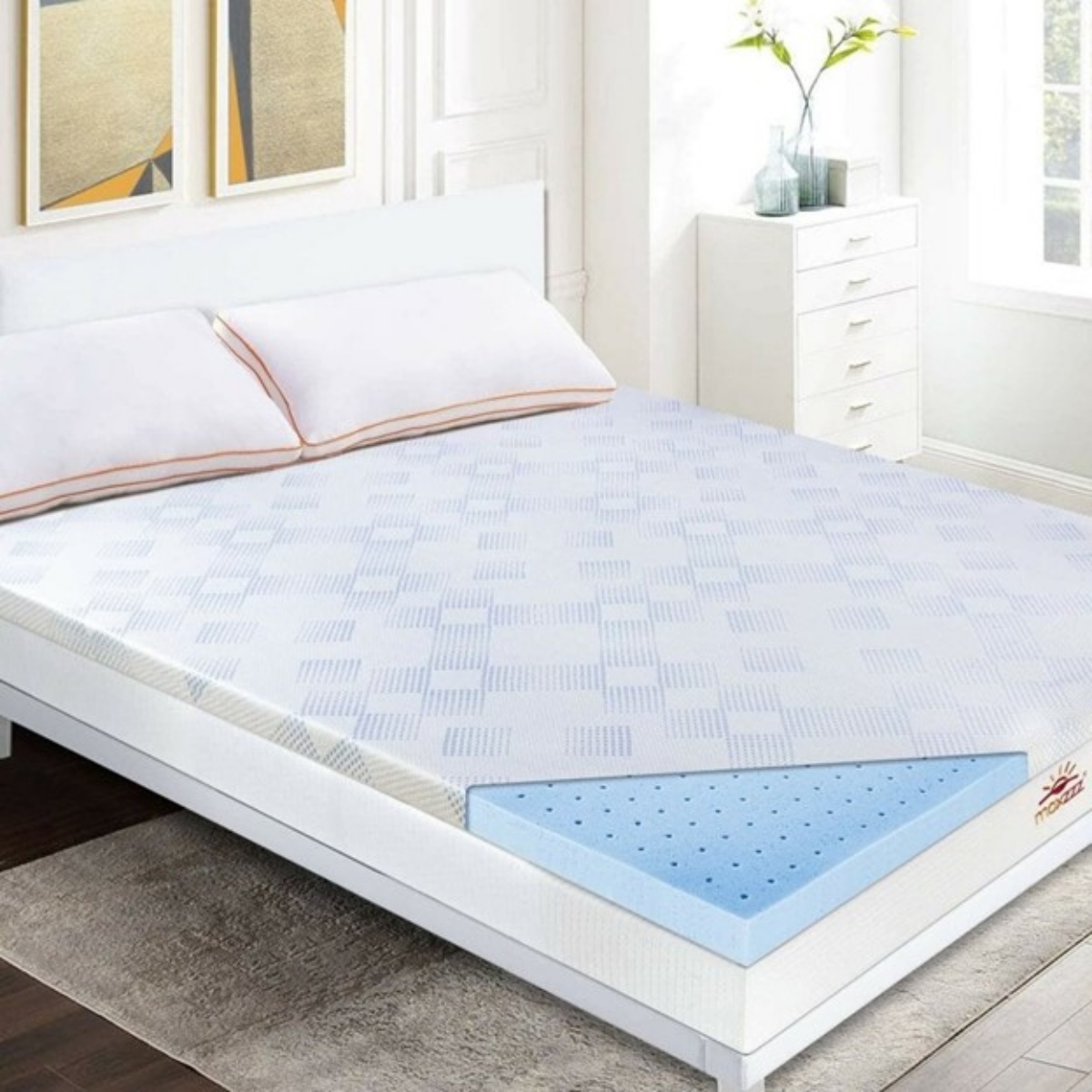

Bedroom Furniture
How Often To Replace Mattress Topper
Modified: March 6, 2024
Discover how often you should replace your mattress topper for optimal comfort and support. Find the perfect bedroom furniture at affordable prices.
(Many of the links in this article redirect to a specific reviewed product. Your purchase of these products through affiliate links helps to generate commission for Storables.com, at no extra cost. Learn more)
Introduction
When it comes to getting a good night’s sleep, the quality of your mattress topper plays a crucial role. Mattress toppers are designed to add an extra layer of comfort and support to your bed, helping you achieve better sleep and wake up feeling refreshed. However, just like any other bedding item, mattress toppers have a lifespan and need to be replaced periodically.
In this article, we will discuss the factors to consider when replacing a mattress topper, the signs that indicate the need for a new one, the lifespan of different mattress topper materials, and how often you should replace your mattress topper. We will also explore the benefits of regularly replacing your mattress topper and provide some tips on how to maintain its lifespan.
Key Takeaways:
- Regularly replacing your mattress topper ensures better sleep quality, reduces allergens, and extends the lifespan of your mattress, leading to a more comfortable and hygienic sleep environment.
- Factors such as wear and tear, discomfort, and material lifespan indicate when to replace your mattress topper, ensuring optimal comfort and support for a restful night’s sleep.
Read more: How Often To Replace A Mattress Pad
Factors to Consider When Replacing a Mattress Topper
Before deciding to replace your mattress topper, there are a few factors you should take into consideration. One of the first things to consider is the overall condition of your current topper. Is it still providing adequate comfort and support? Are there any visible signs of wear and tear, such as lumps or sagging?
The age of your mattress topper is another crucial factor. Different materials have different lifespans, and over time, they may lose their ability to provide the same level of comfort and support as when they were new. Additionally, factors such as your body weight, sleeping habits, and personal preferences should also be considered when determining whether it’s time to replace your mattress topper.
Signs that Indicate the Need for a New Mattress Topper
There are several common signs that indicate it’s time to replace your mattress topper. One of the most noticeable signs is the presence of visible wear and tear, such as indentations or sagging areas. These can significantly reduce the comfort and support provided by the topper.
Another sign to watch out for is discomfort while sleeping. If you’re experiencing increased back pain, tossing and turning during the night, or waking up feeling unrested, it could be a clear indication that your mattress topper is no longer providing the necessary support.
Finally, if you notice an accumulation of allergens, such as dust mites, on your mattress topper, it’s a sign that it needs replacement. Regular cleaning can help, but if the allergens persist despite thorough cleaning, it may be time for a fresh start.
Key Takeaways:
- Regularly replacing your mattress topper ensures better sleep quality, reduces allergens, and extends the lifespan of your mattress, leading to a more comfortable and hygienic sleep environment.
- Factors such as wear and tear, discomfort, and material lifespan indicate when to replace your mattress topper, ensuring optimal comfort and support for a restful night’s sleep.
Read more: How Often To Replace A Mattress Pad
Factors to Consider When Replacing a Mattress Topper
When it comes to replacing a mattress topper, there are several factors that you should consider. These factors will help you determine whether it’s time to invest in a new topper to enhance your sleep experience. Let’s take a closer look at what you should keep in mind:
- Condition: Assess the overall condition of your current mattress topper. Look for any visible signs of wear and tear, such as lumps, sagging areas, or unevenness. If your topper is showing significant deterioration, it may be time to replace it.
- Age: Consider the age of your mattress topper. Different types of toppers have varying lifespans. Memory foam toppers, for example, typically last between three to five years, while latex toppers can last up to eight years. If your topper has exceeded its expected lifespan, it may be a good idea to start looking for a replacement.
- Comfort and Support: Pay attention to how comfortable and supportive your current mattress topper is. Over time, the materials in the topper may lose their ability to provide the same level of comfort and support as when they were new. If you’re experiencing discomfort, uneven support, or increased pain while sleeping, it could be a sign that your topper needs to be replaced.
- Body Weight and Sleeping Habits: Your body weight and sleeping habits can also impact the lifespan of your mattress topper. If you are heavier or tend to move around a lot during sleep, it can put additional stress on the topper, causing it to wear out faster. Similarly, if you frequently use your bed for activities other than sleeping, such as reading or working, your topper may deteriorate more quickly.
- Personal Preferences: Consider your personal preferences when it comes to sleep comfort. If you find that you’re no longer satisfied with the level of cushioning or support provided by your current topper, it might be time to explore other options that better cater to your needs. Everyone’s preferences are different, so finding a topper that aligns with your specific requirements can greatly enhance your sleep quality.
By taking these factors into account, you’ll be able to make an informed decision about whether it’s time to replace your mattress topper. Remember that investing in a new topper can be a worthwhile investment in your sleep health and overall well-being.
Signs that Indicate the Need for a New Mattress Topper
As your mattress topper ages, it may start to show signs of wear and tear that can impact its comfort and support. To ensure you continue to get a good night’s sleep, it’s essential to be aware of the signs that indicate the need for a new mattress topper. Here are some common signs to watch out for:
- Visible Wear and Tear: If you notice visible signs of wear and tear on your mattress topper, such as lumps, indentations, or sagging areas, it’s a clear indication that it may need to be replaced. These deformations can significantly affect the level of comfort and support provided by the topper, leading to a less restful sleep experience.
- Discomfort and Pain: If you find yourself experiencing increased discomfort or pain while sleeping, it could be a sign that your mattress topper is no longer providing adequate support. You may notice backaches, joint pain, or muscle stiffness upon awakening. These symptoms suggest that the topper has lost its ability to align your spine properly and relieve pressure points, thus affecting the quality of your sleep.
- Sleep Disturbances: Another sign that your mattress topper needs replacement is frequent sleep disturbances. If you find yourself tossing and turning throughout the night, struggling to find a comfortable position, or waking up feeling restless and unrested, it may be due to the lack of proper support from your topper. Sleep disruptions can have a negative impact on your overall well-being and productivity during the day.
- Allergen Accumulation: Over time, allergens such as dust mites can accumulate in your mattress topper. These microscopic organisms can trigger allergies and respiratory issues, leading to disrupted sleep. Regular cleaning and maintenance can help manage allergens, but if they persist despite your best efforts, it might be time to invest in a new topper to ensure a cleaner and healthier sleep environment.
- Changes in Body Weight or Sleeping Habits: Significant changes in body weight or alterations in your sleeping habits can impact the longevity of your mattress topper. If you’ve gained or lost a considerable amount of weight, it can exert additional pressure on the topper, causing it to wear out faster. Similarly, if you’ve changed your sleeping position or started sharing your bed with a partner, it may warrant a reevaluation of your topper’s suitability.
By paying attention to these signs, you can assess whether your mattress topper is still providing the comfort and support you need for a good night’s sleep. If you notice any of these indications, it’s a good idea to start considering a new mattress topper to ensure you continue to enjoy optimal sleep quality and wake up feeling rejuvenated.
It is recommended to replace your mattress topper every 2-3 years to maintain its support and comfort. Over time, the topper can lose its shape and effectiveness, so regular replacement is important for a good night’s sleep.
Read more: How Often Should I Replace Mattress
Lifespan of Different Mattress Topper Materials
When it comes to choosing a mattress topper, it’s important to consider not only the comfort and support it provides but also its lifespan. Different materials have varying durability, and understanding the lifespan of each type will help you make an informed decision. Here’s a breakdown of the lifespan for common mattress topper materials:
- Memory Foam: Memory foam mattress toppers are known for their exceptional contouring and pressure-relieving properties. On average, a high-quality memory foam topper can last between three to five years with proper care. However, it’s important to note that the lifespan can vary depending on the density and quality of the foam. Higher density foams with better quality tend to have a longer lifespan.
- Latex: Latex mattress toppers are highly durable and resilient. They can provide excellent support and comfort for up to eight years or more, making them one of the longest-lasting options available. Natural latex toppers generally outlast synthetic latex ones, so if longevity is a priority for you, opt for a natural latex topper. Additionally, latex is also resistant to dust mites and mold, contributing to its longevity.
- Fiberfill: Fiberfill mattress toppers, often made from polyester or down alternative materials, are generally less expensive and have a shorter lifespan compared to foam or latex. On average, a fiberfill topper may last between one to three years. However, it’s important to keep in mind that the lifespan may vary depending on the quality of the materials and the frequency of use. Regular fluffing and maintenance can help prolong their lifespan.
- Feather/Down: Feather or down mattress toppers are known for their luxurious softness and comfort. However, they tend to have a shorter lifespan compared to other materials. On average, a feather or down topper may last around two to four years. It’s important to note that regular fluffing and proper maintenance are essential to prevent flattening and maintain their loft and resilience.
- Polyurethane Foam: Polyurethane foam mattress toppers are often less expensive than memory foam but provide similar levels of comfort. Their lifespan typically ranges from two to four years, depending on the density and quality of the foam. Regular rotation and proper care can help extend their longevity.
- Gel Memory Foam: Gel memory foam toppers combine the contouring abilities of memory foam with cooling properties. Their lifespan is similar to regular memory foam, ranging from three to five years. The cooling gel properties may help dissipate heat more effectively, providing a more comfortable sleep experience.
It’s important to keep in mind that these lifespans are estimates and can vary depending on factors such as usage, body weight, and overall care. Additionally, regular cleaning and maintenance can help extend the lifespan of your mattress topper, regardless of the material.
By understanding the lifespan of different mattress topper materials, you can make an informed decision when choosing the best option for your sleep needs and budget. Remember to consider factors such as durability, comfort, and support to find the right balance and enjoy a restful and rejuvenating sleep experience.
How Often Should You Replace a Mattress Topper?
Knowing when to replace your mattress topper is crucial for maintaining a comfortable and supportive sleep surface. While the lifespan of a mattress topper can vary depending on factors such as material quality and usage, there are some general guidelines to keep in mind. Here’s a look at how often you should consider replacing your mattress topper:
- Memory Foam: Memory foam mattress toppers typically have a lifespan of three to five years. Over time, the foam may start to lose its original shape and become less responsive to your body. If you notice significant sagging, uneven support, or decreased comfort, it’s probably time to replace your memory foam topper.
- Latex: Latex mattress toppers are known for their durability and can last up to eight years or more, depending on the quality of the latex. However, if you start experiencing discomfort or notice signs of sagging, it may be time to consider a replacement. Keep in mind that natural latex toppers tend to have a longer lifespan compared to synthetic latex versions.
- Fiberfill: Fiberfill mattress toppers, made from polyester or down alternative materials, typically have a shorter lifespan compared to foam or latex. On average, they can last between one to three years. If you notice flattening, loss of loft, or decreased cushioning, it may be a sign that your fiberfill topper needs to be replaced.
- Feather/Down: Feather or down mattress toppers offer luxurious softness but tend to have a shorter lifespan. On average, they can last around two to four years. However, if you start experiencing feathers poking through the fabric, loss of fluffiness, or a decrease in comfort and support, it’s time to consider a replacement.
- Polyurethane Foam: Polyurethane foam mattress toppers generally last between two to four years. If you notice signs of wear and tear, such as significant sagging or loss of support, it may be time for a replacement. Regular rotation and proper care can help extend the lifespan of polyurethane foam toppers.
- Gel Memory Foam: Gel memory foam toppers have a similar lifespan to regular memory foam, typically lasting three to five years. If you notice a decline in comfort and support, or the gel properties are no longer effectively dissipating heat, it may be worth considering a replacement.
It’s important to note that these are general guidelines and that individual factors such as usage, body weight, and maintenance can influence the lifespan of your mattress topper. Regularly inspect the condition of your topper and pay attention to any signs of wear and tear. If you’re experiencing discomfort or noticing a decrease in the topper’s performance, it’s a good indication that it’s time for a new one.
Remember that investing in a new mattress topper is an investment in your sleep quality and overall well-being. By replacing your topper at the appropriate time, you can ensure that your sleep surface remains comfortable, supportive, and conducive to a restful night’s sleep.
Benefits of Regularly Replacing Your Mattress Topper
Regularly replacing your mattress topper offers numerous benefits that can enhance your sleep experience and overall well-being. Here are some key advantages of keeping your mattress topper fresh and up to date:
- Improved Comfort: Over time, mattress toppers can lose their shape and become less supportive. By replacing your topper regularly, you can ensure optimal comfort and support while you sleep. A new topper will provide better cushioning and contouring, relieving pressure points and promoting a more restful sleep experience.
- Enhanced Support: As a mattress topper ages, it may start to sag or develop uneven areas, leading to compromised support. By replacing it regularly, you can enjoy consistent support for your body, ensuring proper spinal alignment and reducing the risk of waking up with aches and pains.
- Better Sleep Hygiene: Replacing your mattress topper is an opportunity to improve your sleep hygiene. Old toppers can accumulate allergens such as dust mites, dead skin cells, and sweat, which can impact the quality of your sleep and trigger allergies. A fresh, clean topper eliminates these allergens and creates a healthier sleep environment.
- Reduced Sleep Disturbances: A worn-out mattress topper can lead to sleep disturbances, such as tossing and turning, due to discomfort or lack of proper support. By replacing your topper, you can minimize sleep disruptions, allowing you to enjoy uninterrupted rest throughout the night.
- Improved Durability: Regularly replacing your mattress topper can actually extend the lifespan of your mattress. A worn-out topper places additional stress on your mattress, potentially accelerating its wear and tear. By ensuring that the topper is in good condition, you can help protect, maintain, and extend the life of your underlying mattress.
- Optimal Sleep Temperature: Many newer mattress toppers incorporate cooling technologies or materials to regulate body temperature during sleep. By upgrading to a newer topper, you can take advantage of these cooling properties, ensuring a more comfortable and temperate sleep environment.
By regularly replacing your mattress topper, you can reap these benefits and enjoy a more comfortable and refreshing sleep. Remember to choose a topper that suits your specific sleep preferences and needs, taking into account factors such as firmness, material, and thickness.
Additionally, proper care and maintenance can also help prolong the lifespan of your mattress topper. Regularly rotating the topper, using a protective cover, and following manufacturer’s cleaning and care instructions can keep it in optimal condition for a longer period of time.
Investing in a new mattress topper is an investment in your sleep health and overall well-being. By ensuring that your sleep surface is comfortable, supportive, and clean, you can wake up feeling refreshed, rejuvenated, and ready to take on the day.
Tips for Maintaining the Lifespan of Your Mattress Topper
To maximize the lifespan of your mattress topper and keep it in optimal condition, regular maintenance and care are essential. By following these tips, you can ensure that your topper stays comfortable, supportive, and durable for an extended period of time:
- Use a Mattress Protector: Investing in a high-quality mattress protector is one of the best ways to protect your topper from stains, spills, allergens, and dust mites. A waterproof and breathable protector will create a barrier to prevent liquids, allergens, and debris from penetrating the topper, keeping it clean and hygienic.
- Regularly Rotate or Flip: To prevent uneven wear and sagging, it’s recommended to rotate or flip your mattress topper regularly. This will distribute the weight and pressure more evenly and promote more consistent wear, helping to extend its overall lifespan.
- Follow Manufacturer’s Cleaning Instructions: Each mattress topper material may have different cleaning requirements. Follow the manufacturer’s instructions for cleaning and maintenance to prevent damage and preserve the quality of the topper. Some toppers may be machine washable, while others may require spot cleaning or professional cleaning.
- Avoid Excessive Moisture: Moisture can lead to the growth of mold and mildew, which can damage your mattress topper. Avoid spilling liquids directly on the topper and promptly clean up any accidents. If your topper does get wet, allow it to dry completely before using it again.
- Regularly Air Out: Give your mattress topper some time to breathe and refresh by airing it out periodically. Remove the sheets and allow the topper to air in a well-ventilated area, preferably under sunlight. This helps to reduce any potential odors and moisture buildup.
- Properly Support the Topper: Ensure that the underlying mattress provides adequate support for your mattress topper. A sagging or worn-out mattress can contribute to the deterioration of the topper. Consider replacing your mattress if it is no longer providing proper support.
- Regularly Clean Bedding: Regularly clean your bedding, including sheets and pillowcases, to prevent the accumulation of allergens and dust on your mattress topper. Clean bedding contributes to a cleaner sleep environment and helps maintain the freshness of your topper.
- Avoid Excessive Weight or Rough Handling: Be mindful of placing heavy objects or applying excessive pressure on your mattress topper. This can cause it to become misshapen and lose its supportive properties. When moving the topper or adjusting its position, handle it with care to avoid tears or damage.
By following these tips, you can significantly prolong the lifespan of your mattress topper and ensure that it remains comfortable and supportive for years to come. Remember that proper maintenance and care not only benefit the topper but also contribute to your overall sleep quality and well-being.
Lastly, if your mattress topper is showing significant signs of wear and tear or is no longer providing the necessary comfort and support, it may be time to consider replacing it. Regularly assessing the condition of your topper will help you make an informed decision and continue to enjoy a comfortable sleep experience.
Read more: How To Store A Mattress Topper
Conclusion
Investing in a high-quality mattress topper is a great way to enhance the comfort and support of your bed. However, just like any bedding item, mattress toppers have a lifespan and need to be replaced periodically to maintain optimal sleep quality. By paying attention to the signs indicating the need for a new topper and following proper maintenance techniques, you can ensure that your sleep surface remains comfortable, supportive, and hygienic for years to come.
Whether you have a memory foam, latex, fiberfill, feather/down, or polyurethane foam topper, understanding the expected lifespan of your specific material is crucial for making an informed decision about replacement. By considering factors such as the overall condition, age, and your personal preferences, you can determine whether it’s time to upgrade to a new mattress topper that better suits your sleeping needs.
Regularly replacing your mattress topper offers several benefits. It improves comfort and support, reduces sleep disturbances, enhances sleep hygiene, and even contributes to the longevity of your mattress. Additionally, proper maintenance, such as using a mattress protector, regularly rotating the topper, and following manufacturer’s cleaning instructions, can greatly extend its lifespan and ensure it stays in optimal condition.
Remember, your sleep quality is essential for your overall well-being. A comfortable and supportive sleep surface helps you wake up refreshed and ready to take on the day. By investing in a new mattress topper when needed and taking care of it, you can create a sleep environment that fosters restorative sleep and improves your overall sleep experience.
So, keep an eye out for the signs indicating the need for a replacement, follow proper maintenance techniques, and enjoy the benefits of a fresh and comfortable mattress topper. Your nights will be filled with restful sleep, and you’ll wake up feeling rejuvenated and ready to embrace each new day.
Frequently Asked Questions about How Often To Replace Mattress Topper
Was this page helpful?
At Storables.com, we guarantee accurate and reliable information. Our content, validated by Expert Board Contributors, is crafted following stringent Editorial Policies. We're committed to providing you with well-researched, expert-backed insights for all your informational needs.
